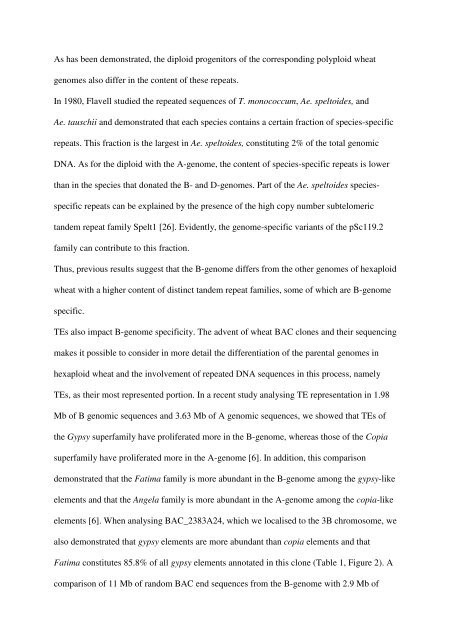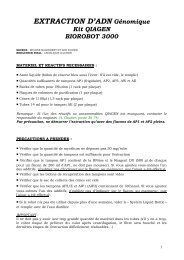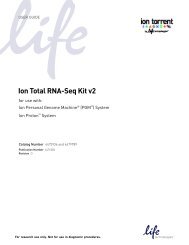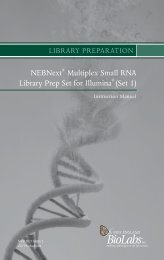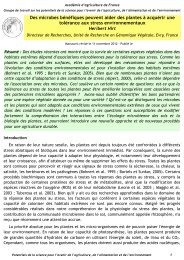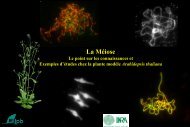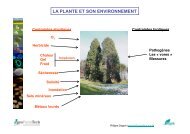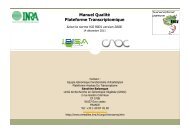The impact of Ty3-gypsy group LTR retrotransposons ... - URGV - Inra
The impact of Ty3-gypsy group LTR retrotransposons ... - URGV - Inra
The impact of Ty3-gypsy group LTR retrotransposons ... - URGV - Inra
You also want an ePaper? Increase the reach of your titles
YUMPU automatically turns print PDFs into web optimized ePapers that Google loves.
As has been demonstrated, the diploid progenitors <strong>of</strong> the corresponding polyploid wheat<br />
genomes also differ in the content <strong>of</strong> these repeats.<br />
In 1980, Flavell studied the repeated sequences <strong>of</strong> T. monococcum, Ae. speltoides, and<br />
Ae. tauschii and demonstrated that each species contains a certain fraction <strong>of</strong> species-specific<br />
repeats. This fraction is the largest in Ae. speltoides, constituting 2% <strong>of</strong> the total genomic<br />
DNA. As for the diploid with the A-genome, the content <strong>of</strong> species-specific repeats is lower<br />
than in the species that donated the B- and D-genomes. Part <strong>of</strong> the Ae. speltoides speciesspecific<br />
repeats can be explained by the presence <strong>of</strong> the high copy number subtelomeric<br />
tandem repeat family Spelt1 [26]. Evidently, the genome-specific variants <strong>of</strong> the pSc119.2<br />
family can contribute to this fraction.<br />
Thus, previous results suggest that the B-genome differs from the other genomes <strong>of</strong> hexaploid<br />
wheat with a higher content <strong>of</strong> distinct tandem repeat families, some <strong>of</strong> which are B-genome<br />
specific.<br />
TEs also <strong>impact</strong> B-genome specificity. <strong>The</strong> advent <strong>of</strong> wheat BAC clones and their sequencing<br />
makes it possible to consider in more detail the differentiation <strong>of</strong> the parental genomes in<br />
hexaploid wheat and the involvement <strong>of</strong> repeated DNA sequences in this process, namely<br />
TEs, as their most represented portion. In a recent study analysing TE representation in 1.98<br />
Mb <strong>of</strong> B genomic sequences and 3.63 Mb <strong>of</strong> A genomic sequences, we showed that TEs <strong>of</strong><br />
the Gypsy superfamily have proliferated more in the B-genome, whereas those <strong>of</strong> the Copia<br />
superfamily have proliferated more in the A-genome [6]. In addition, this comparison<br />
demonstrated that the Fatima family is more abundant in the B-genome among the <strong>gypsy</strong>-like<br />
elements and that the Angela family is more abundant in the A-genome among the copia-like<br />
elements [6]. When analysing BAC_2383A24, which we localised to the 3B chromosome, we<br />
also demonstrated that <strong>gypsy</strong> elements are more abundant than copia elements and that<br />
Fatima constitutes 85.8% <strong>of</strong> all <strong>gypsy</strong> elements annotated in this clone (Table 1, Figure 2). A<br />
comparison <strong>of</strong> 11 Mb <strong>of</strong> random BAC end sequences from the B-genome with 2.9 Mb <strong>of</strong>


